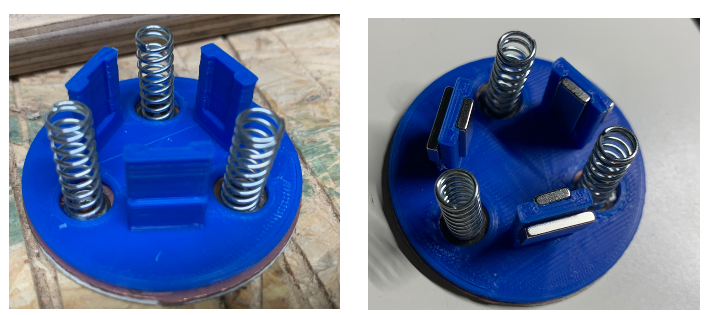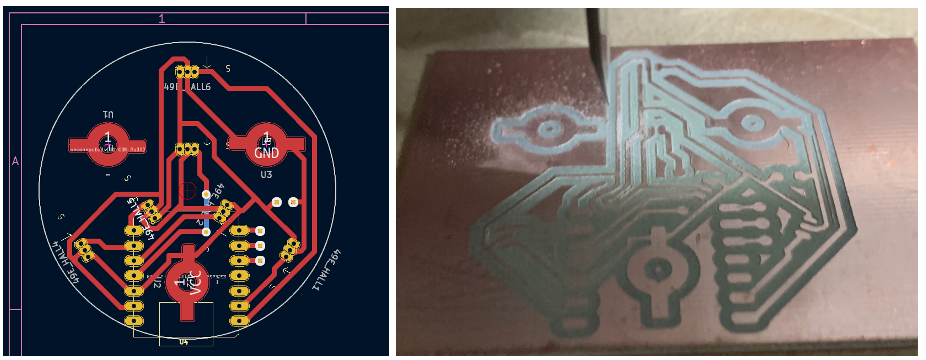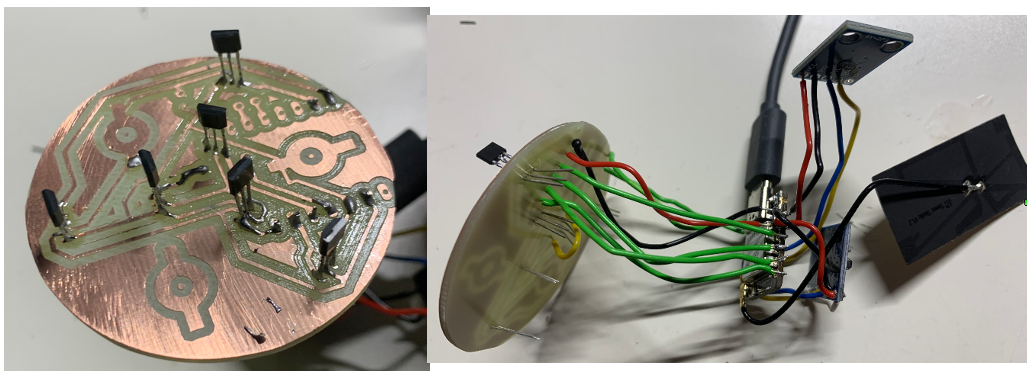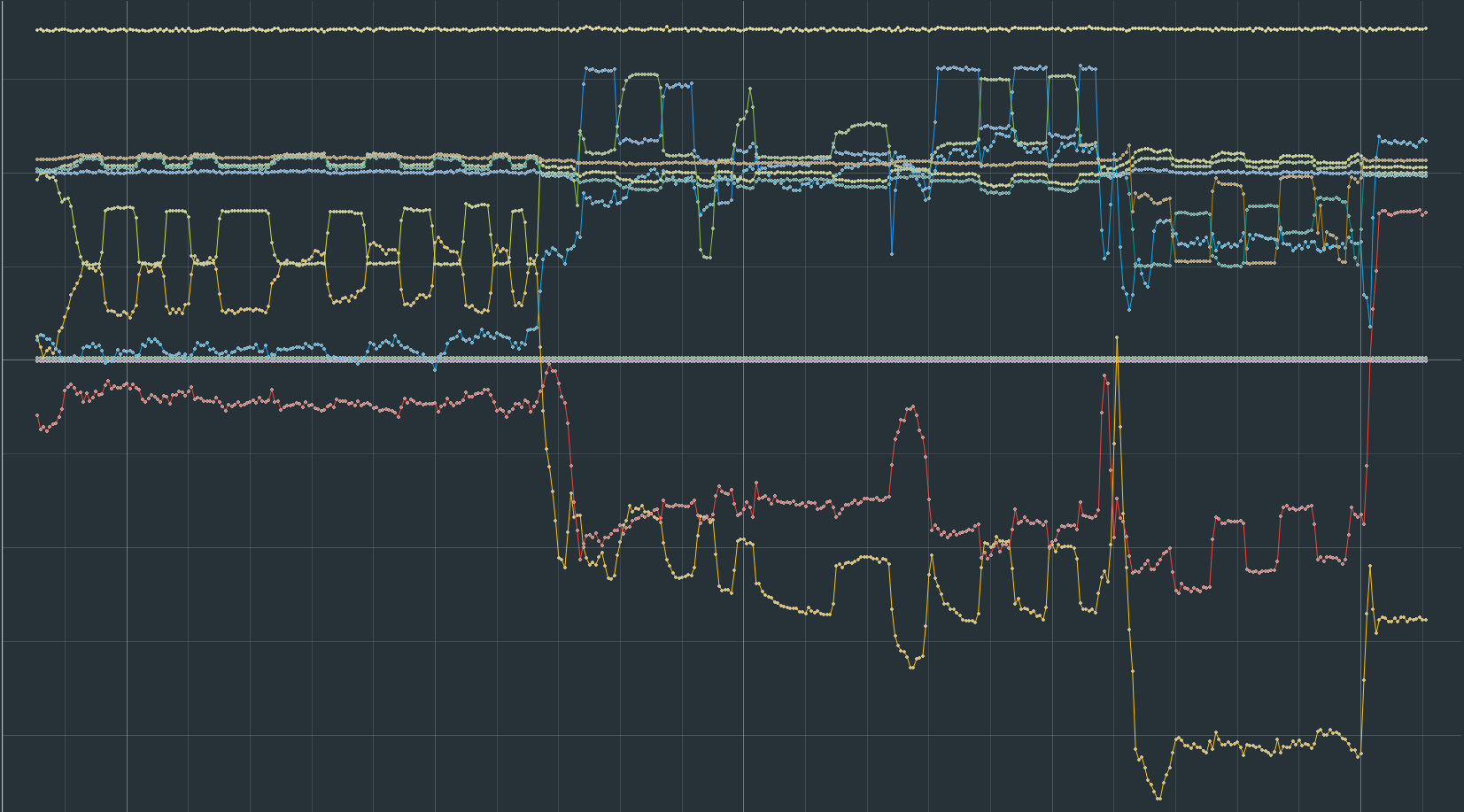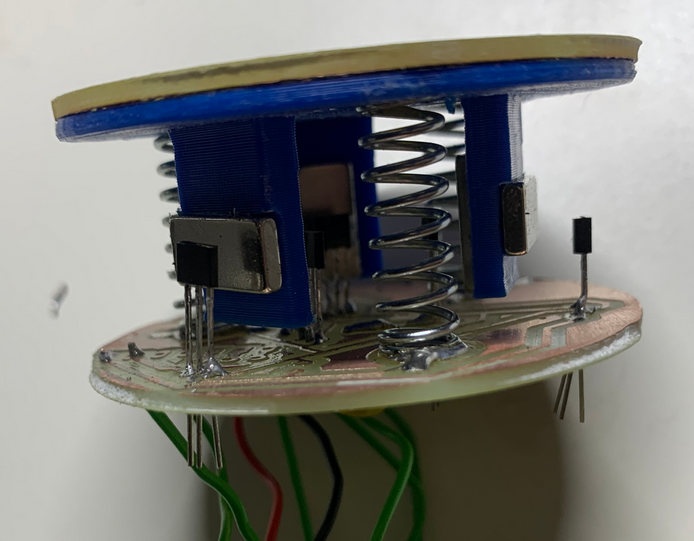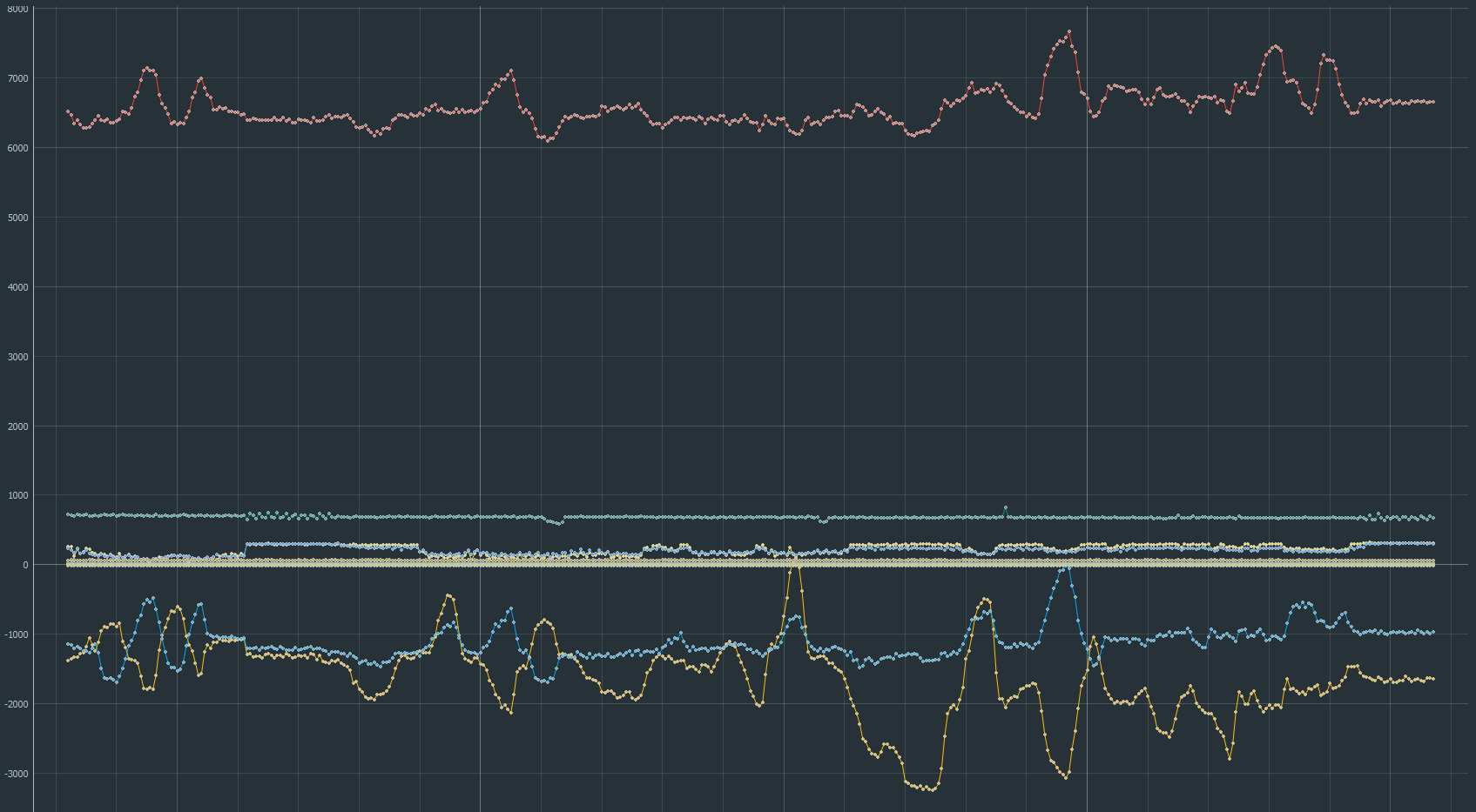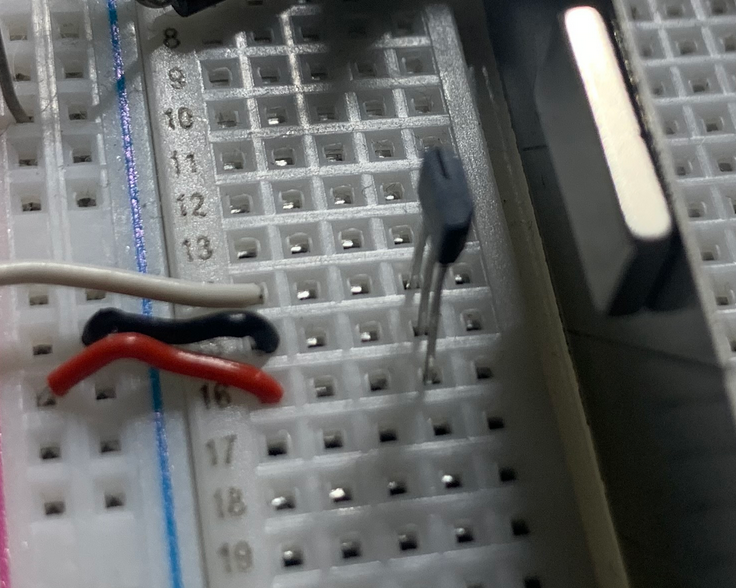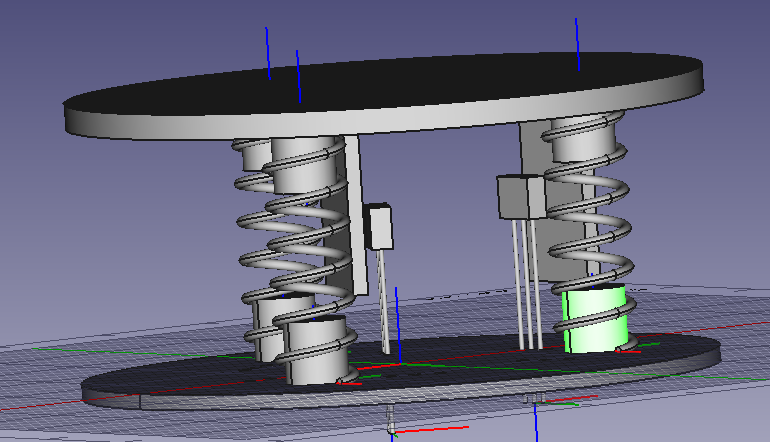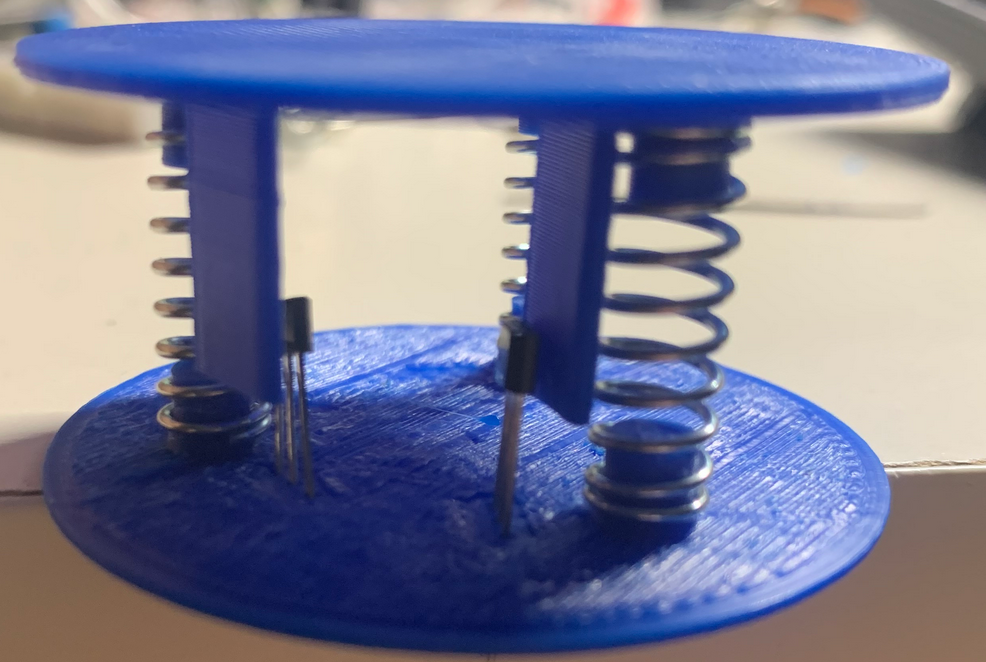-
Debugging frustration & a new concept
10/03/2023 at 15:55 • 0 commentsSo maybe the first sample was only the Gyro I saw. Some cables had been loose. After some debugging it still seamed not to work.
So a started to play arround with another concept I thought of; using the 3D magnetic sensors (QMC5883L). On the table they nicely detected small movements from arround 2cm distance with a good signal:
And I found a very handsome tool for fast 3D magnetic field calculation with python MagPyLib. I looked for such tools quite some time but was not successfull. I was quite easy to setup a simulation of this concept and evaluate the magnetic measuremtts depending on the movement of the knob. This would also be an important step to derive the back calcualtion formula, how to get back from magnetic measurements to the movement of the know.
3x 3D magnetic sensors and 3x 5x2 neodym magnets with a magnetization of 1T each. each 10 samples have been a rotation over each axis by +/- 5° and a movement of +/-2mm respectively. For each I got different patterns of measurement at around 0.1mT which should be good to be used as measurement.
I tried to calcualte the inverse function by a simple linear regression (and some more datapoints) and it did not look to bad:
Adding an arctan of the measured B values to the regression leaded to a sufficient result:
Next steps
- I might experiment a bit with different setting to explore the stability
- Might also work with only one magnet wich is sufficiently decentered so that not knob movement will result in ambigious measurements. Or 2x magnet sensors should be also sufficient.
-
First (somehow) working sample
09/22/2023 at 21:37 • 0 commentsNext I draw a mounting of the magents to put over a base plate:
![]()
I used the first PCB which was geed enough usable as spring mount and glued the magets on the 3D prined holder:
![]()
Then I put some time in a new design in KiCad with only one via and a direct connection possibility of the ESP32S. This time it was successfull when I also used a hightmap with my CNC :-):
![]()
Soldering the Hall sensors (49E) to the board and some flying cables to the ESP32S.
![]()
(What you also see connected is a 6D IMU over I2S I thought of using and an I2C 3D Magnetic sensor which I tested in parallel as alternative concept. and of course the antenna).
So it seamed that all channels are working (somehow) when I tested with a single magnet (the straight lines have been IMU and the 3D magnetic sensor for away):
![]()
Next comes the "marriage" by soldering the bottom with the Hall sensors to the top with the magnets:
![]()
It seamed that I lost 3 channels on the way, since only 3 show bigger variations when moving the top. However, tough and feel was not to bad and I think I might stay with the stiffer springs. I already ordered a steel base, let's see how this feels with a bigger weight:
![]()
Debugging comes the next days ....
-
First experiements in hardware
09/20/2023 at 19:30 • 0 commentsMagnets arrived (rectangular), linear hall sensors (49E) as well and I found some springs. Some tests to get a feeling about sensitivity and distances.
![]()
Might work so I started to sketch a demonstrator enclosure. I am still not sure how to place the magnets and halls exactly. Either I measure 6 times the "angled" z distance to the top or 3 times the z displacement and 3 times the in plane displacment like the optical system by connexions space mouse.
![]()
Not really sure, so I just stared with a first guess and printed the parts to get some more experience.
![]()
I had 20mm long springs with inner diameter of 5mm. The soft ones had a wire diameter of 0.4mm and harder ones of 0.8mm. I just sticked the springs to the poles without glueing
First impressions:
- Magnet fixture needs more distance towards springs and are to thin (break). A mechanical fixture of the hall sensors will be helpfull
- Soft springs seamed too soft, hard ones somehow OK.
- For the hard springs, I think it will be hard to lift the top w/o lifting the base plate. Difficult to test without a heavy base and fixed springs. Maybe preloded?
- Stoppers needed, but I will do them later, initial test work well without
-
Prolog
09/17/2023 at 13:34 • 0 commentsI use different 3D tools for my hobby and always struggle to switch between the different keys to push to move around the objects around. I though of using a 6D knob would be very handy and tested the well known professional version at a friend of mine. Really col but 200€ is far to much and so I thought I can build one of my own. I started to search arround the internet and found that there are several enthusiast as me who started the same endeavour:
https://bastelbaus.github.io/Galaxy6D/market/
Components are ordered and I will try to take you with me on this journey!
Galaxy6D: simple DIY full 6D space mouse
Full 6D mouse by three 3D magnetic sensors and magnets. 3D printed housing, ESP32S with battery operation over BLE as well as USB-C.
 BastelBaus
BastelBaus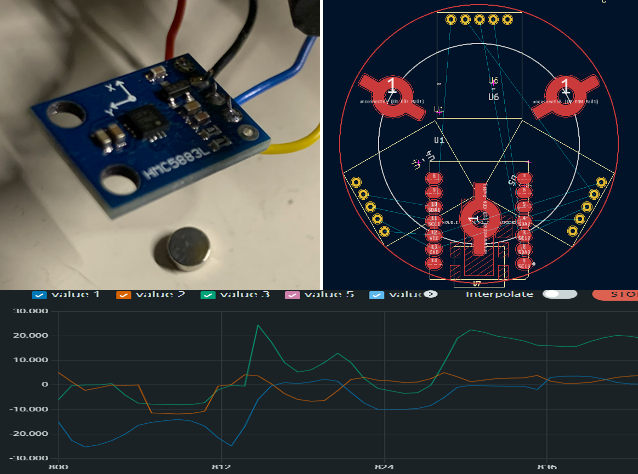
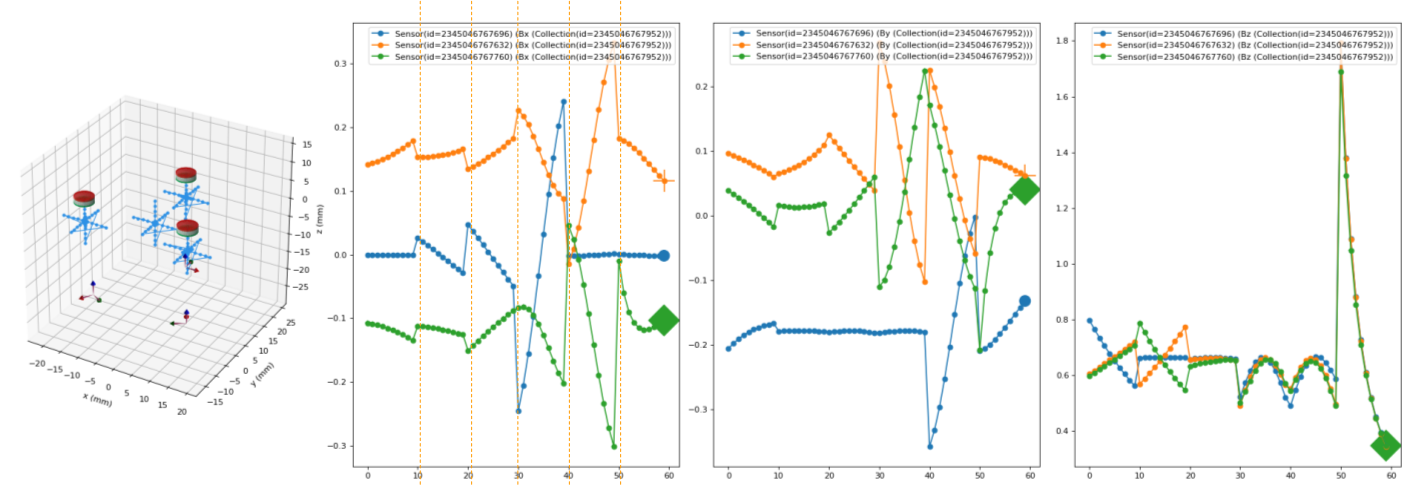
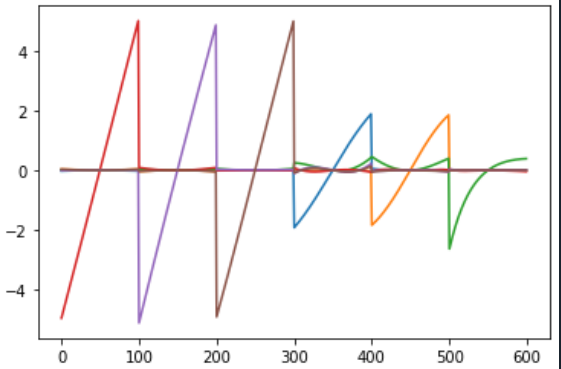
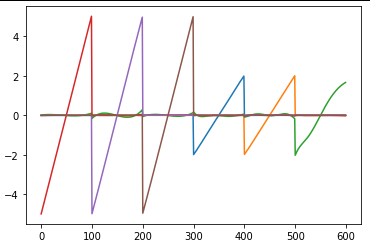 Next steps
Next steps
